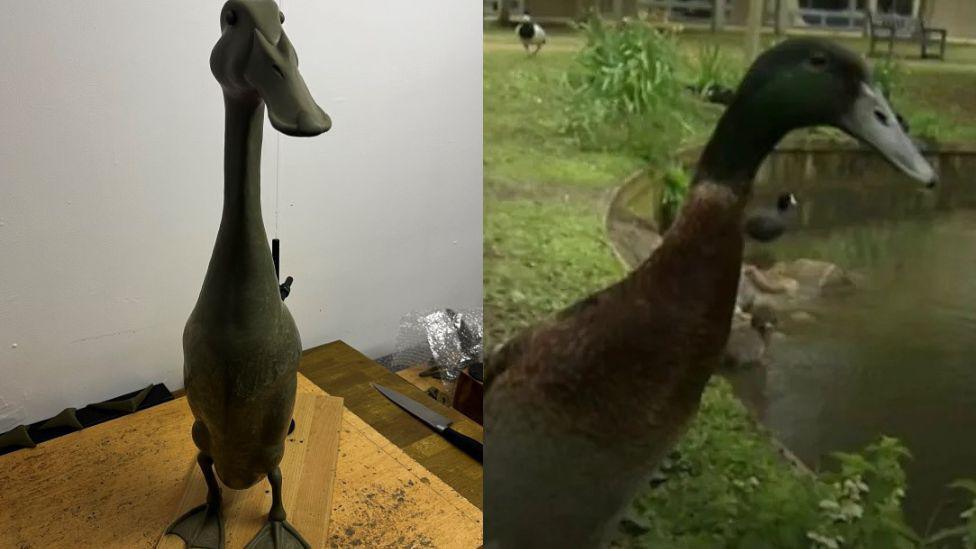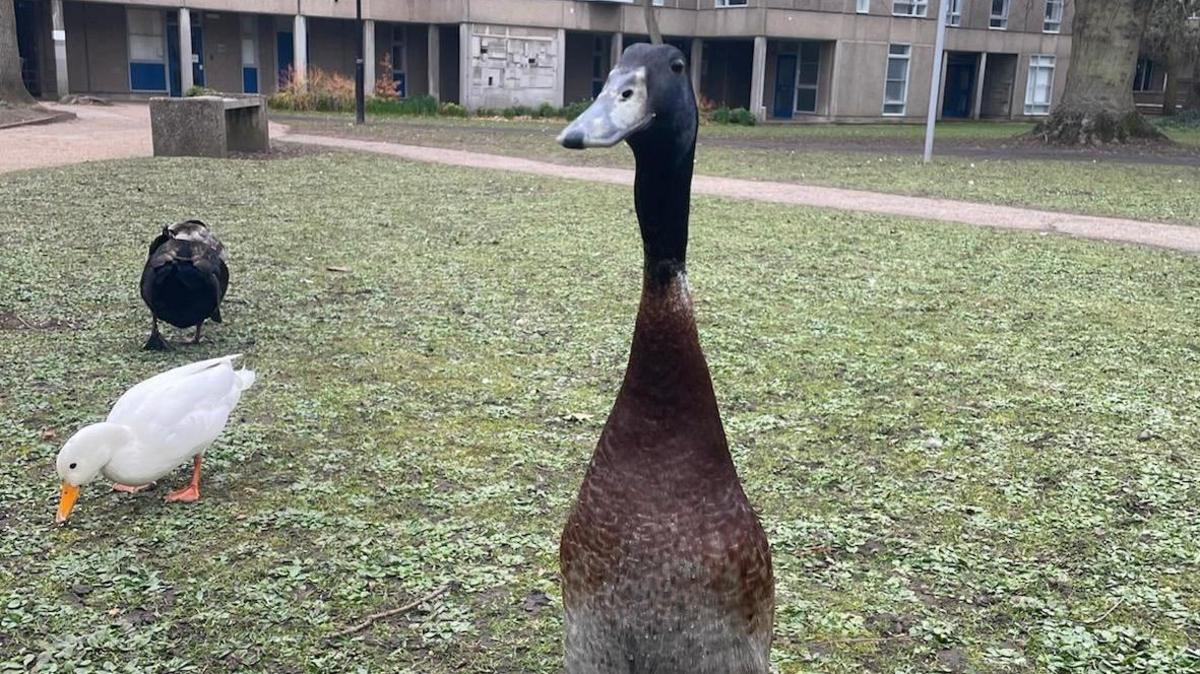Long Boi: Uni of York duck sculpture designs revealed

The sculpture was crowdfunded by students after Long Boi's presumed passing
- Published
The first images of a lifesize sculpture dedicated to a much-loved "university duck" have been revealed.
Long Boi, a 70cm-tall mallard/Indian runner who lived in the grounds of the University of York, became a social media sensation in 2022 after BBC Radio 1's Greg James featured him on his Breakfast Show.
Christened by students for his unusual height, he was sadly presumed dead after he vanished from campus last year.
The sculpture is likely to be formally unveiled at the university later this year.

A clay mould of the artwork has been sent to Greece to be cast in bronze
The clay mould for the artwork was hand-carved by Welsh wildlife sculptor Neil Mason, and has now been shipped to Greece so it can be cast in bronze.
It is expected to return to the UK within a month.
The sculpture was crowdfunded by students keen to give Long Boi, who had 56,000 followers on an eponymous Instagram account, a permanent legacy on campus.
Mr Mason told the BBC he had been "intrigued" by the duck's story, after his sister Heather encouraged him to put himself forward for the artwork.
He said: "I was struck by the cause because it speaks to wildlife, which I'm passionate about.
"Besides being an artist, I also work in mental health. The sense of welfare, outside space, and psychological wellbeing associated with the story was quite strong.
"Long Boi clearly meant a lot to people through Covid, which was quite a challenging time."

Long Boi came to national attention after he was featured on the Radio 1 Breakfast Show
Mr Mason said he had tried to capture Long Boi's "presence" with his sculpture.
"One of the challenges was, I hadn't seen him in the round - and alive - so I relied on Instagram photos and videos people had recorded," he explained.
"I used those as reference materials, but I tried to engender the character he seemed to represent to people - he had quite an imperious look to him!
"When I showed the clay mould to the students they seemed quite pleased with it."
Follow BBC Yorkshire on Facebook, external, X (formerly known as Twitter), external and Instagram, external.
Related topics
Related internet links
- Published3 May 2023

- Published1 August 2023

- Published11 May 2023
